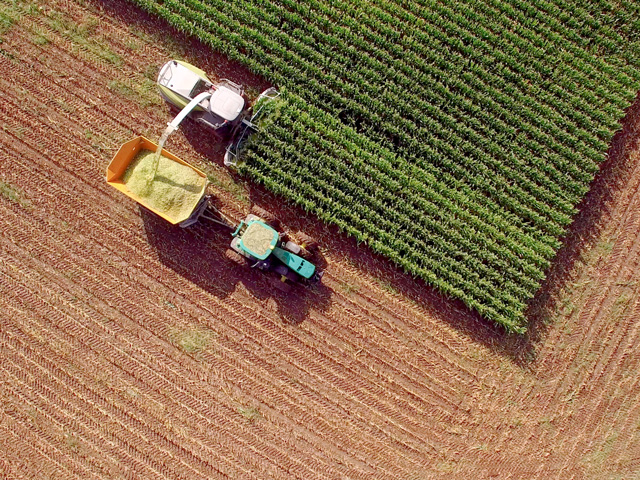Buy, Sell Power From Electric Tractors
California-Based Gridtractor Offers Tech Managing Power in Electric Tractor Batteries
New California technology company Gridtractor has launched a fleet electrification service offering farms and ranches technology to manage their electrified equipment fleets, drastically reduce farm and ranch fuel expenses and help meet California's goal for zero-emissions transportation -- a plan that includes agricultural equipment.
Gridtractor's plans extend well beyond managing the charging side of the electrified tractor operations. The company proposes to also work with farms to create "vehicle-to-grid" opportunities. Vehicle-to-grid, or V2G, is an electrical-management strategy that delivers a flow of stored electrical energy back to the electric grid.
"Our basic idea is that when you transition your tractors to electric, you (gain) a mix of assets that are using electricity, but that can also be used flexibly. And that has value," David Meyers, CEO of Gridtractor, told DTN/Progressive Farmer in an interview. "You can actually be a player in the electrical market while getting your work done. Gridtractor (will help farm operators) optimize the cost of energy -- and perhaps even turn it into something where they can make money."
The technology is complicated, but the concept is fairly simple. An electrified fleet of tractors has charging needs while performing farm work. But instead of building hundreds of charging stations, small numbers of California's estimated 70,000 irrigation pump sites can be outfitted to create in-field charging stations.
The bigger financial play is to charge the tractors when electrical rates are at their lowest, generally at night. The electrical power held in tractor batteries can be used to perform work, run irrigation pumps or actually sold back into the grid at times of high demand -- theoretically, at a profit. It is a process giving energy providers the ability to strengthen power grids by tapping into the downtime of electrified equipment.
P[L1] D[0x0] M[300x250] OOP[F] ADUNIT[] T[]
Gridtractor is developing control software and hardware that will help farmers manage fleets of tractors, irrigation pumps and solar arrays to optimize the economics of energy production, consumption and storage. The company is launching operations in California initially to take advantage of the electrical infrastructure on farms, incentives for electrification and opportunities to test the integration of vehicles with the electrical grid.
"The longest pole in the tent for transportation electrification is building out the infrastructure to support a massive increase in demand on the grid, and with the vehicle-to-grid component of our solution, we can essentially turn an electric tractor into a giant battery," Meyers said. "We estimate that on top of the field savings, farmers can save 15% for smart charging and vehicle-to-load/vehicle-to-grid applications, for a total of 90% cost savings that will be supplemented by lower maintenance and repair costs (of electric tractors)."
The company's first customer, Terranova Ranch, will utilize the Gridtractor Planning Model Software to determine the best deployments for electric tractors given the existing electrical infrastructure at its dozens of irrigation pump sites and solar arrays. Terranova Ranch began farming in the 1980s outside Helm, California, about 30 miles southwest of Fresno. Over time, it has transitioned from cotton, alfalfa hay, wheat and barley to 25 different crops of fruits, vegetables, nuts and seed crops on 9,000 acres, including 600 acres of organic crops.
"The idea is to be able to have charging stations throughout the ranch. The (tractor) guys can leave the tractors there, park them and charge when they're not being used," said Don Cameron, vice president and general manager of Terranova Ranch. "Then, come back when rates are high, plug them back in, and push that electricity back into the grid during peak periods and peak pricing periods, so that we can offset the use of running these tractors."
Cameron believes agriculture offers solutions to the high demands placed on power grids. "Rather than (putting) out big backup batteries, we could get dual purpose from our equipment, and we don't have emissions," Cameron said. "Batteries are going to get very, very efficient. This could be something farmers could use and at the same time lower our costs and, hopefully, increase our margins."
Gridtractor is beginning with tractors. But as large-farm fleets convert to electrical technologies, its business potential expands exponentially to additional pieces of farming equipment -- think autonomous sprayers and harvesters -- and, importantly, to the oncoming fleets of electrical trucks.
"So, you may have a time of the year when all you can do is charge (your tractors)," said Meyers. "And that's all you can do because work is nonstop. But you have other times where maybe you need eight or 10 hours out of that tractor. And maybe you can (use that time) within a total window of 12 or 14 hours. You can schedule charging. Then you can discharge (stored battery power) back to the grid to maximize profit."
This is a concept with a track record. Gridtractor is a partially owned subsidiary of Polaris Energy Services. The Polaris' energy management platform links more than 500 large irrigation and conveyance pumps with energy market incentives by way of automated irrigation controls similar to the technologies Gridtractor is building.
"Just in California, we have 70,000 irrigation pumps that are used 20% to 25% of the time," Meyers said. "That's an incredible amount of infrastructure that can be used for electrical vehicles, for tractors and for providing services to the grid. And they happen to be located in exactly the right places on the grid to provide those services."
For more information: http://www.gridtractor.com/…
Dan Miller can be reached at dan.miller@dtn.com
Follow him on Twitter @DMillerPF
(c) Copyright 2021 DTN, LLC. All rights reserved.




